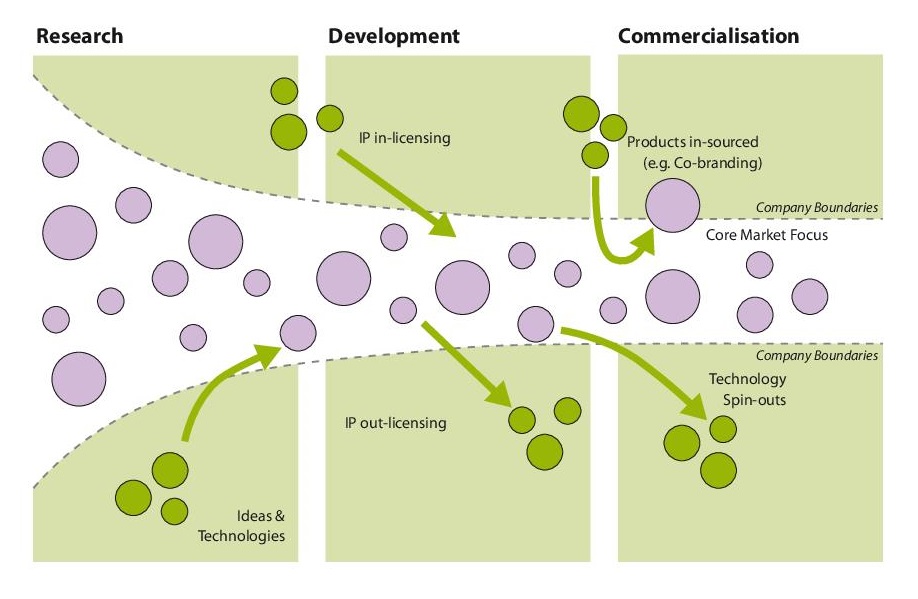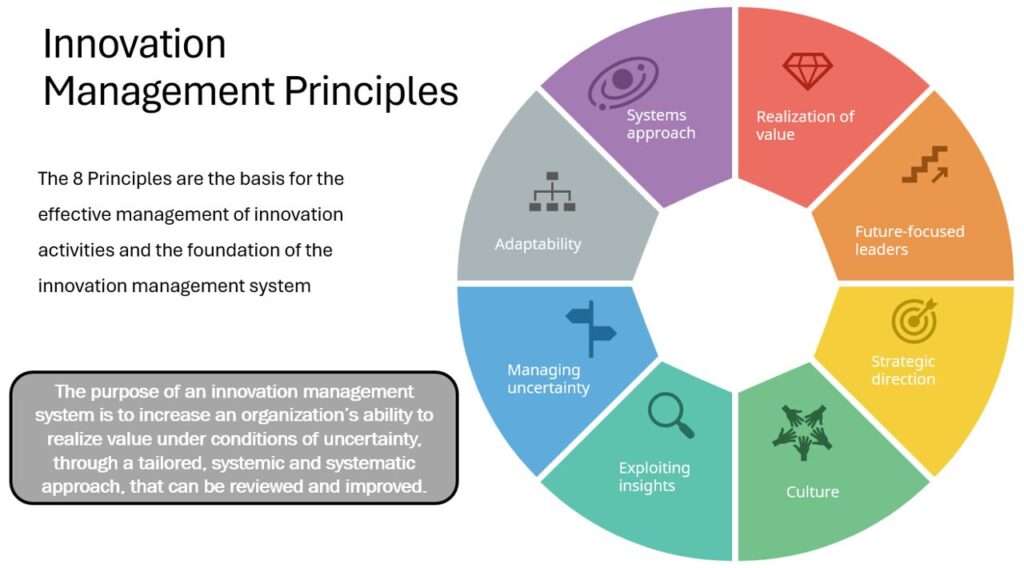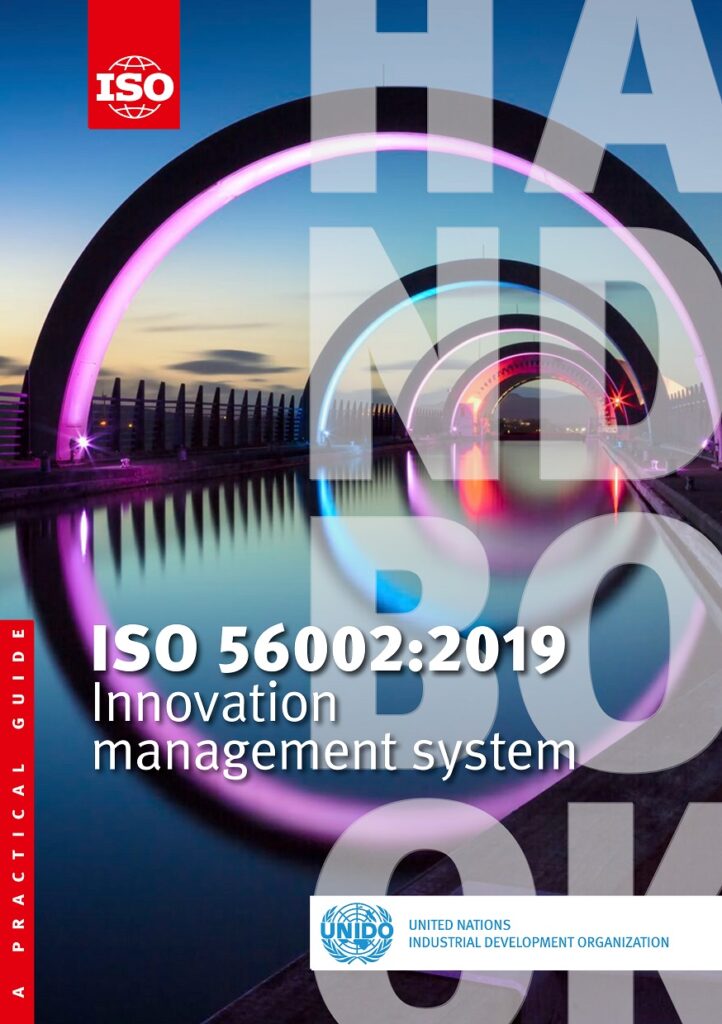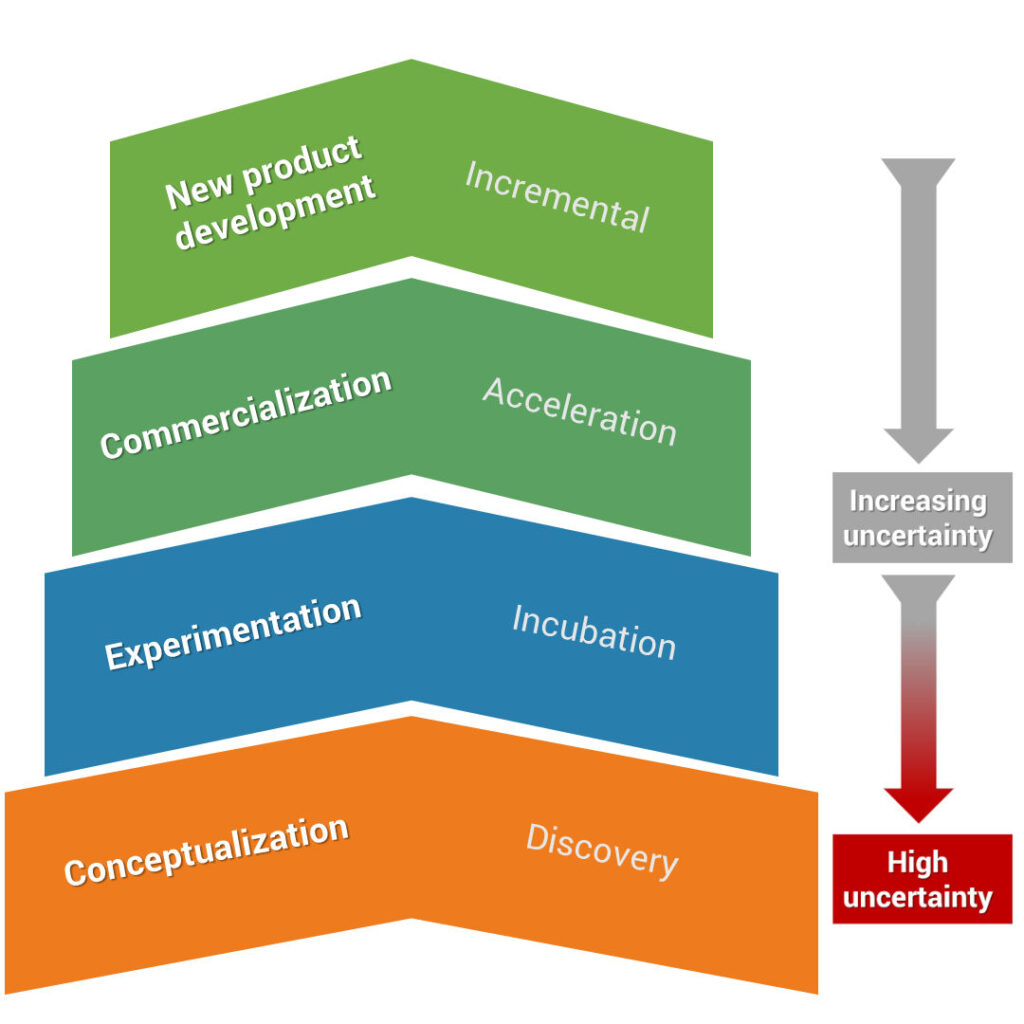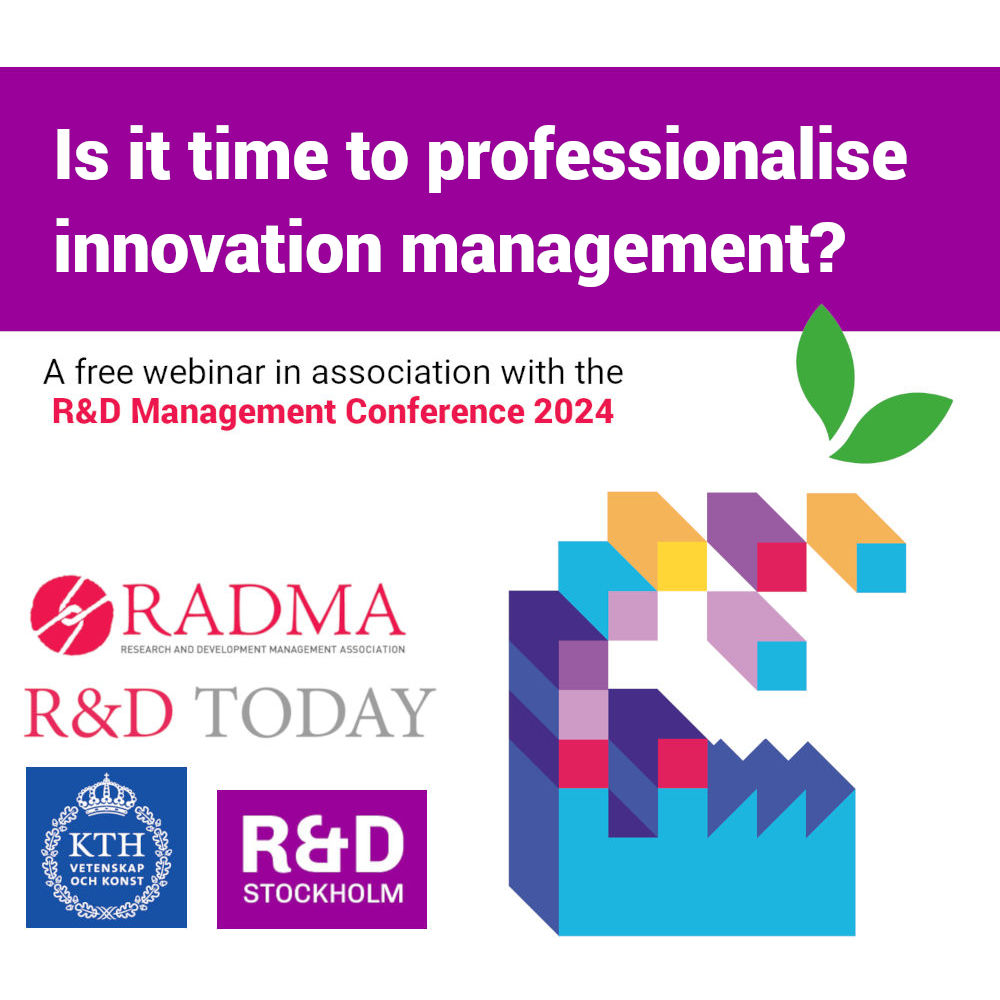What makes an innovation leader?
It has been said that becoming a leader in Innovation Management is an exercise in controlled schizophrenia. In his paper Jan Buijs observes that innovating is a multi-faceted process and these key elements are conflicting.
Innovation leadership
- Driving radical innovation that can disrupt current markets – there is tension between incremental improvement of existing products and the introduction of new technologies.
- Motivating the innovation team while preparing for failure – how can commitment be maintained when projects are high risk?
- Predicting outcomes when the creative process has an ill defined end-point.
- Charismatic leadership is required, although poor project outcomes can be career limiting.
These four aspects work in parallel during the innovation process, but all four aspects need to be dealt with in different ways. Nearly all of them are, in one way or another, in conflict with another.
They may conflict in real actions, in time horizons (past, present or future) or in effect (positive reactions during market introduction do not guarantee ultimate market success). This means that innovation leaders need to show a special kind of leadership.
Innovation leadership must be balanced, people-focused and must include a high tolerance for ambiguity and paradoxes. They have to be nice and nasty at the same time.
In short: innovation leaders should be some kind of controlled schizophrenics.
Read the paper: Innovation Leaders Should be Controlled Schizophrenics Jan Buijs, 16 May 2007 https://doi.org/10.1111/j.1467-8691.2007.00431.x
Current status of Innovation Leadership
Although Innovation Management meets many of the ‘tests’ of a profession it is still not widely recognised as such. We have captured some of the current discussion and the work that is being done to answer some key questions.
Individual perspective
Is “innovation management” a profession in its own right? What are the key jobs and titles?
What kind of skills are required for innovation leadership?
What kind of “career opportunities” or “career penalties” do innovation management professionals encounter?
Organisational perspective
Where do “innovation” and “innovation management” reside in an organization? Does there need to be someone who conducts it in particular? Isn’t it also distributed and for everyone?
How to make innovation more strategic and not periodical/ad hoc/random? What are the ideal organizational structures and arrangements?
Can innovation ever be really “controlled” or “anticipated”, and if so, is there a risk of paralysis and rigidity in the organization?
How can the ability for surprising bottom-up and entrepreneurial innovations to be retained while bringing in more structure, process, and professionalism?
Institution and academic perspective
What kinds of standards, certificates, and other formal acknowledgments there are for innovation management and innovation management professionals?
Are professionalism, certificates, and standards useful for IM? For instance, do they help in gaining legitimacy towards internal or external stakeholders?
Do you think it is useful or even possible to fully standardize something as elusive, heterogeneous, and intangible as IM? Are there even downsides to that?
The ethics of innovation management and innovators – can we help improve these aspects with professionalism?
Looking to the future?
What is the future of IM profession in companies and the field at large academically?







